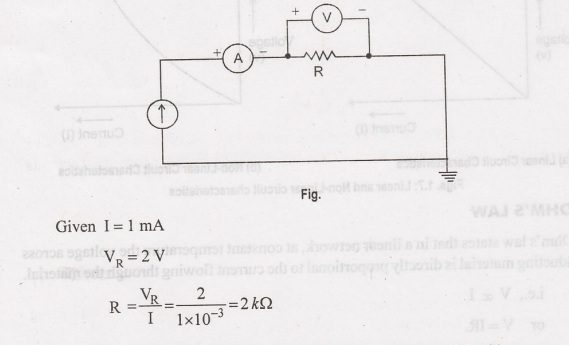Basic Electrical, Electronics And Instrumentation Engineering: UNIT I: Electrical Circuits
OHM'S Law
Limitations of Ohm's Law
Ohm's law states that in a linear network, at constant temperature the voltage across the conducting material is directly proportional to the current flowing through the material.
OHM'S
LAW
Ohm's
law states that in a linear network, at constant temperature the voltage across
the conducting material is directly proportional to the current flowing through
the material.
i.e.,
V ∞ I
or
V = IR.
From
this the values of I and R can be determined from the following:

Limitations
of Ohm's Law
(1)
Ohm's law is applicable only for metallic conductors maintained at a constant
temperature. This law is not applicable if the temperature changes.
(2)
Ohm's law is not applicable to all non-metallic conductor.
(3)
If is also not applicable to non-linear devices. Such as diodes, transistors
and other semiconductor devices.
Example 1.1:
Find the voltage drop across a 10 k resistor of the current flowing through it
is 1 mA.
Given:
R = 10 kQ
I
= 1 mA
V
= IR = 1 x 10-3 x 10 x 103
=
10 V.
Example 1.2:
Find the value of cross resistance R in the circuit shown in the figure below
if the ammeter measures 1 mA and voltmeter measures 2 V.

Example 1.3:
A bulb is rated as 230 V, 1 A. Find the resistance of the filament.
Given:
V = 230 V, I = 1 A

Basic Electrical, Electronics And Instrumentation Engineering: UNIT I: Electrical Circuits : Tag: : Limitations of Ohm's Law - OHM'S Law
Related Topics
Related Subjects
Basic Electrical, Electronics and Instrumentation Engineering
BE3252 2021 Regulation | 2nd Semester Civil Dept 2021 Regulation
